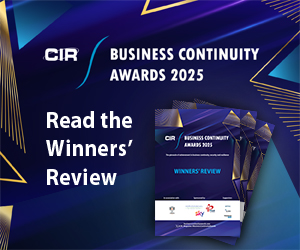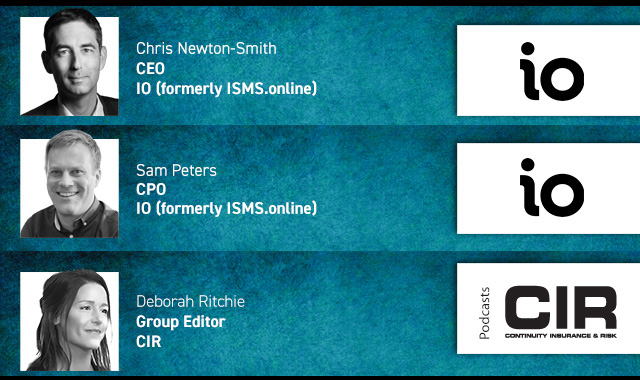AB InBev’s mis-steps with Bud Light shine a new light on the chaos of influencer marketing, in a world where culture wars and rapidly-widening schisms are the new reputational risks. Jeremy Hughes writes
In the digital age, the old saying, ‘there is no such thing as bad publicity’ may no longer hold true. This year, Bud Light lost its crown as America’s most popular beer, relinquishing the spot to rival Modelo after 22 years at the top. This fall from grace resulted from a drop in sales of nearly 25 per cent over a six-week period – costing parent company AB InBev an estimated US$5 billion in lost value.
Just one event precipitated this change: a single Instagram post by transgender TikToker, Dylan Mulvaney, which triggered a robust reaction, both online and amongst consumers, including a boycott of the Bud Light brand. Given the damage to brand, sales and revenue, could parent company AB InBev’s marketing team have anticipated the backlash – and planned for it?
The art of quantifying, anticipating and mitigating risk is sophisticated, but for a concept as ephemeral as reputation, the challenge is greater – and the damage potentially incalculable. In this day of fast-moving news cycles and social media amplification, companies whose marketing efforts misfire experience serious impacts to the bottom line.
Corporations know this and allocate fortunes to shaping their reputations: McKinsey estimates that corporates’ annual marketing budgets currently run at about US$1 trillion globally. In addition, spending on public relations consulting will grow from US$100.39 billion in 2022 to US$107.05 billion this year at a compound annual growth rate of 6.6 per cent, according to the Business Research Company.
The fast-moving new world of influencer marketing through social media has become a vital component of many companies’ digital strategies. Done right, it can raise brand recognition, improve customer loyalty and increase sales.
According to consultancy Deloitte, marketing officers report that an average of 57.9 per cent of their budgets is spent on digital marketing, including influencer campaigns. In the alcoholic beverages sector, although the lion’s share (44 per cent) goes to TV advertising, digital claims a significant 30 per cent. And globally, within the digital space, spending on influencer advertising is projected to reach US$30.81 billion this year. But if not handled with care, as Bud Light shows, influencer marketing has the capacity to crash a brand’s reputation and damage its business significantly.
Global brewing conglomerate AB InBev’s digital campaign for its ‘Easy Carry’ contest kicked off on 1st April. Although it is unclear whether Mulvaney was paid by Bud Light, the TikToker received a pack of individually-branded cans and posed with them for a single Instagram video. Mulvaney has 1.8 million Instagram followers and 10.8 million TikTok followers – no small beer by any measure.
The backlash began almost immediately, with objections focused particularly on the campaign’s perceived “wokeism” and “gender propaganda”. Although the cans featuring Mulvaney were not in fact available to the general public, the damage was done. Many posted videos of people throwing Bud Light and other Anheuser-Busch products in the garbage; musician Kid Rock’s clip featured himself peppering cans of Bud Light with an assault rifle. In a more sinister twist, bomb threats were made at several Anheuser-Busch facilities across the US. Nationwide budget retailer Target removed Pride-themed displays in some stores, despite having taken a public stance supporting LGBTQ+ causes for the past decade. Country singer Travis Tritt banned sales of Bud Light on his tour. Lawmakers became involved as Conservative congress members threatened an investigation into alcohol marketing to minors.
The campaign
What were Bud Light’s marketers’ original intentions? Alissa Heinerscheid, Bud Light’s vice-president of marketing, explained: “I had a really clear job to do when I took over Bud Light, and it was, ‘this brand is in decline, it’s been in a decline for a really long time, and if we do not attract young drinkers to...this brand there will be no future for Bud Light.’”
Heinerscheid said the campaign had one objective: to update the brand’s ‘frat boy’ image – an association with young, privileged male consumers. One way to do this was through broader marketing segmentation: a strategy that identifies distinct groups of consumers, enabling businesses to tailor marketing efforts and offerings to better meet the unique requirements of each segment. And a fruitful way to venture beyond the ‘frat boy’ segment is to extend marketing to previously excluded groups, including the LGBTQ+ community.
The strategy makes good business sense: inclusivity can be lucrative. In 2019, the combined purchasing power of LGBT adults worldwide was calculated to be about US$3.7 trillion – and businesses have not been slow to target this market.
Such campaigns also have a secondary or complementary purpose – to promote inclusivity within the business. This has the benefits of creating working cultures where all feel welcome and valued, with positive ramifications for talent recruitment and retention.
The backlash
By seeking to embrace new audiences, Budweiser alienated its core demographic. By week ending 15th April, Bud Light’s sales had dropped 17 per cent compared to the same week the previous year. Meanwhile, rivals Miller Lite and Coors Lite both saw their sales jump more than 17 per cent.
By the week ending 22nd April, sales of Bud Lite had fallen 21.4 per cent, according to NIQ data, and sank further to a 24.6 per cent year-on-year deficit in the week ending 13th May, according to beverages industry specialist Bump Williams Consulting and Nielson IQ research.
The damage to AB’s reputation was compounded by their response. In a defensive statement, it said the public reaction to the post was based on “misinformation”.
“Anheuser-Busch works with hundreds of influencers across our brands as one of many ways to authentically connect with audiences across various demographics and passion points,” it stated. “From time to time, we produce unique commemorative cans for fans and for brand influencers, like Dylan Mulvaney. This commemorative can was a gift to celebrate a personal milestone and is not for sale to the general public.”
On 2nd July, Bud Light released a new commercial, starring Kansas City Chiefs footballer Travis Kelce, called “Backyard Grunts with Travis Kelce”, in an apparent attempt to mollify the brand’s alienated male consumers.
Mulvaney’s own public statements skewered the company’s damage-limitation measures, declaring on social media that they had faced “more bullying and transphobia than [they] could have ever imagined” following the post, adding: “For a company to hire a trans person and then not publicly stand by them is worse, in my opinion, than not hiring a trans person at all.” And LGBTQ+ bars agreed, staging a counter-boycott of Bud Light to protest AB InBev’s lack of commitment to Mulvaney.
By the end of April, marketer Heinerschtad and her boss, Daniel Blake, had taken indefinite leave of absence.
This was not the first time Mulvaney’s endorsement preempted a backlash for a sponsor, but this time, the company’s response was markedly different. Shortly after the Bud Light promotion, Nike, which has itself fallen foul of numerous brand blunders and marketing missteps, decided to bring in Mulvaney to promote the brand’s women’s sports apparel. In response to widespread social media criticism, Nike said: “Hate speech, bullying, or other behaviours that are not in the spirit of a diverse and inclusive community, will be deleted.”
Test the water
In this divisive new world, what steps can marketers take to anticipate the risk – and to manage negative consequences if they arise? Certainly, when launching a promotion to a new market segment, marketing teams should research their new audience and be aware of current societal and cultural sensitivities.
As renowned advertising pioneer David Ogilvy said, “Advertising people who ignore research are as dangerous as generals who ignore decodes of enemy signals.” At the time of the Mulvaney post, anti-trans sentiment in the US was on the rise and becoming increasingly politicised. The promotion landed right in the middle of a rapidly widening schism in US identity politics.
Being prepared in advance for unforeseen negative outcomes is also fundamental to successful reputation management. Having a well-defined crisis management plan to handle potential reputation-damaging situations effectively is best practice; a hasty volte-face is likely to confuse or further alienate consumers.
Even the best-prepared campaign can run into trouble, however. Companies can respond quickly, as Nike did, to minimise the damage, but harm can still be done. In the case of a boycott, the Institute for Policy Research at Northwestern University asserts that the damage is fleeting. “Boycotts usually set out to put financial pressure on a company,” says Professor Braydon King. “[But] the typical boycott doesn’t have much impact on sales revenue.”
Research from the Kellogg School of Management suggests that, even if there is a boycott, sales usually bounce back. After examining the January 2022 artists’ boycott of music streaming platform, Spotify, Kellogg concluded, “widely publicised calls to boycott Spotify did not harm...subscriber numbers or revenue, which grew at a similar rate as before the controversy”.
Despite what history tells us about recovering from boycotts, by the end of July, four months after Mulvaney’s post, AB InBev had still not fully recovered its previous position in the market.
Quantifying reputation
While it may be obvious – particularly in hindsight – that market research and a viable plan B make sense when venturing into new markets, quantifying the value of a brand is a complex art. Many corporations gauge their public image through the many polls that measure reputation.
The US-based Harris Poll assesses the reputations of the most visible companies in the country, ranking them according to multiple attributes, including social responsibility, emotional appeal, and products and services.
Similarly, the RepTrak survey evaluates companies’ reputations based on several criteria, including products, services, innovation, workplace, governance, corporate citizenship and leadership.
In the age of big data and artificial intelligence, very specific insights are possible – YouGov Brandindex boasts real-time monitoring on 16 ‘brand health’ metrics for corporations – and their competitors.
Market impacts
But damage to reputation can have broader impacts, from diminished earnings, falling share prices, and reduced enterprise value, to devaluation of intellectual property assets like trademarks and trade names.
For AB InBev, the picture is complicated. Its latest earnings statement for the second quarter of 2023 reports global total revenue was up 7.2 per cent on the previous quarter – but North America revenue declined by 10.5 per cent, “impacted by [the] volume decline of Bud Light.” The company’s highly diversified global product set cushioned overall earnings from the impact of the boycott.
Investors may be more resilient to short-term reputational issues. But ahead of the market open on Monday 3rd April – the first trading day after Mulvaney’s post – AB InBev’s share price was US$66.57 on the New York Stock Exchange. Amid increased volatility, the price sank to an eight-month low at US$53.40 by 31st May, before rallying somewhat. The shares closed July at US$57.30 – 14 per cent down on the pre-Mulvaney price.
Taking into account its market capitalisation, as well as its debt and cash, this share price plunge represented a 12.48 per cent fall in AB InBev’s enterprise value by the end of May, from US$210.68 billion to US$184.39 billion. Tracking the price’s slow recovery, enterprise value was US$197.35 by 31st July – down 6.33 per cent on 3rd April.
Looking ahead, financial analysts are quite bullish on the company’s prospects: currently, the consensus rating is ‘hold’, based on ten published reports, with six recommending the shares as a ‘buy’, and two each advising ‘hold’ or ‘sell’. Their consensus price is US$65.63 – a further 14.5 per cent potential upside. This reading of the company’s investment potential suggests that damage from the boycott won’t hurt the company’s broader performance in the medium to long-term.
Although the financials may look promising, impacts on AB InBev’s reputation may still be filtering through. The latest Harris RQ Poll was compiled between 13th and 28th March – just before the Mulvaney furore. At that point, Anheuser-Busch ranked #57 with a score of 75.1 – judged to be ‘very good’, just below Volkswagen Group on a list headed by sportswear manufacturer, Patagonia, which scores 83.5.
In a statement published close to the nadir in Bud Light’s sales at the end of May, YouGov said: “Bud Light began April with a Reputation Score of 11.5-points which steadily declined throughout the month. By 21st April, the brand’s Reputation Score crossed the line into negative territory and continues to fall even in mid-May.”
Bud Light has yet to regain its crown as America’s best-selling beer. Yet this may not mean that the Mulvaney promo has not at least bought the brand some new custom. YouGov data reveals that since the video, Bud Light has improved its overall ranking among twenty-something women from a score of -6 to +0.5. That may not be enough to make up for the loss of a larger and hitherto loyal customer base, as, simultaneously, the brand has tanked amongst Republicans from +13 to -8.
Could a new market segment step in to make up lost ground? It is too early to say – but while the damage to sales has been longer-lasting than most boycotts achieve, the repositioning of the brand may still drive recovery over time. A multinational corporation with more than 500 brands under its roof and almost double the market share of its main competitor has a wealth of options to compensate.
This article was published in the Q3 2023 issue of CIR Magazine.
Download PDF
Contact the editor
Printed Copy:
Would you also like to receive CIR Magazine in print?
Data Use:
We will also send you our free daily email newsletters and other relevant communications, which you can opt out of at any time. Thank you.











YOU MIGHT ALSO LIKE